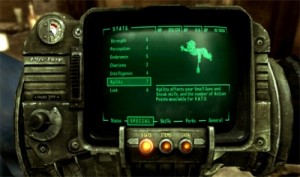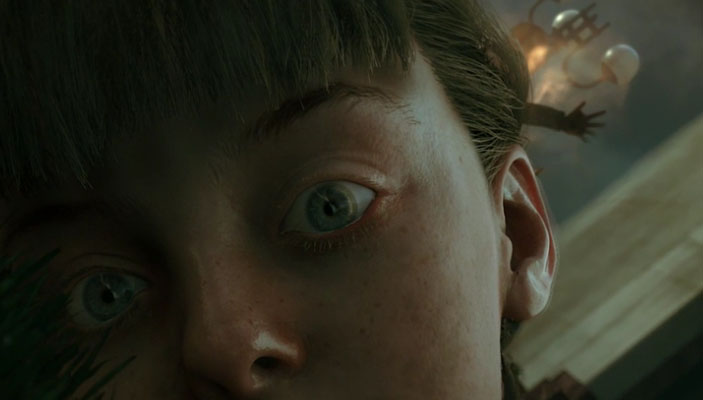Below is an edited and (hopefully contextualized) version of the talk that I did at CCCC 2011 in Atlanta, GA. I have added some images and video but not the entire PowerPoint presentation from the talk.
Ian Bogost defines procedural rhetoric as “a technique for making arguments with computational systems and for unpacking computational arguments others have created”. If we look at the process by which gamers learn to play a game and the procedures used by designers to teach them that there is much that teachers can learn and reflect on. While any of us who “do games” have found us subjected to the “How is this valuable and what does it have to do with writing?” questions, I argue that is procedural rhetoric and specific game design tasks and strategies are both similar to and have a lot to add to what it is that we do in the Composition classroom and the way that we think about it.
Our students have changed. 2008 Pew Internet Study numbers tell us that 97% of teenagers 12-17 years old reported playing games. These numbers have seemed to have grown over the last 3 years as consoles and video games break franchise and company records for sales.
“Call of Duty: Black Ops” blasted entertainment records this week by raking in $360 million in its first 24 hours on sale.
The Pokémon Black Version and Pokémon White Version games for the Nintendo DS™ family of systems became the fastest-selling Pokémon video games of all time, selling more than 1.08 million units after just one day of availability. That surpasses the previous one-day sales record of more than 780,000 set by the Pokémon Diamond Version and Pokémon Pearl Version games in April 2007.
20 years ago we were preparing ourselves for the remote control generation. We were warned about students who had short attention spans and were used to changing topics every 30 seconds at the click of a button. Now we are told to beware the student with quick trigger fingers who don’t read, don’t socialize, and write only in l33t or txt speech because they spend all of their free time (and some of their not so free time) in front of a game consoles and cell phones.
Some 75% of 12-17 year-olds now own cell phones, up from 45% in 2004.
Fully 72% of all teens2 — or 88% of teen cell phone users — are text-messagers
One in three teens sends more than 100 text messages a day, or 3000 texts a month. (Data from the 2010 Pew Study on teens, cell phones, and texting)
But how true is this? Are these students really wasting their time? What have these students learned about learning from games?
One of the things that I have come to realize over my 15 years or so of teaching composition is that very little has changed about the ways that most folks teach Composition over the last 30 years. While this is the case much of what we expect from students in our first year Composition classrooms has actually changed over the same 30-year period. We now find ourselves working with curricula that require composing in a variety of non-alphanumeric media. At this point, using traditional Composition pedagogy to compose non-traditional texts is like trying to force a square peg in a round hole. While most of us recognize that the writing process is cyclical and work hard to teach it as such, we must also recognize that this same pedagogy does not so easily transfer to the teaching of podcasts, web building, video creation. So we have to avoid the lure of bleeding-edge technologies without solid pedagogy behind it.
Compositionists abandoned the notion of a foregrounded end goal in 1972 when theory shifted from the focus of the end product to the process of writing. Here I am situating the beginning of the process pedagogy movement with the publication of Donald Murray’s article “Teach Writing as a Process Not Product” which talks about process pedagogy in a theoretical way even though there had been numerous articles that appeared in the journals of the discipline (such as CCC and English Journal) that talked about process pedagogy in a more practical way.
“Instead of teaching finished writing, we should teach unfinished writing, and glory in it’s unfinishedness.” (“Teaching Writing as a Process, Not a Product”, Donald Murray 1972).
Now is the time to re-think writing process pedagogy. This is not to suggest that we should throw decades of process pedagogy scholarship to the wind and go back to product driven pedagogy, but that we should revise the way that we think about the way that we currently do things and, as such, the way that we teach new instructors to facilitate it. Rather than focusing on the end product (i.e. the finished research paper) it can be useful to think more like game designers and determine what the non-product end game is for our courses and work backward from there. And perhaps the place to start is at the beginning with Murray himself who asks us how we motivate our students to do the difficult and repetitive work of composing.
“How do you motivate your student to pass through this process, perhaps even pass through it again and again on the same piece of writing?” (“Teaching Writing as a Process, Not a Product”, Donald Murray 1972).
As it is the job of game designer to master the idea of the tutorial, save points, and experience points it is the job of the teacher to master classroom pedagogy, assessment, and revision. Game designers are necessarily and deeply invested in their tutorial processes because their very livelihoods depend upon it. Bad tutorials and bad saving structures make for a bad game and, ultimately, poor game sales. While our classroom situations are not quite so mercenary, there is something to be learned from the game design industry in terms of seeing our success as being dependent on the success of our classroom pedagogy and student engagement.
Engaged students learn better. Donald Murray knew it in 1972 and we know it now. One of the main differences between Murray’s students 39 years ago and our students today is what keeps the students engaged. If the numbers hold true and video games really are ubiquitous then clearly games are one of the main points of engagement. Our students have arguably spent more time gaming (and more time learning from and to play games) than they have learned in our classrooms and they learn it more readily. Some have argued that because of the sustained interactions that children have with games that they learn differently than previous generations of gamers because of the ways that they have learned to learn while playing on their own. This is nothing new. Children have always learned through play. They start at birth. First toys help develop gross motor skills and then we progress to fine motor skills and hand-eye coordination. In the same way that playing house teaches children social roles and how to interact with other children, playing video games can teach skills that are applicable and transferable to what we do in the composition classroom.
Many of you may remember playing any of the Mario Bros. games as children. One of the most frustrating things about those games was the fact that if you failed to clear any of the platform hurdles, even the very last one you also failed to clear the level and were unceremoniously dumped back at the last save point. With the release of New Super Mario Bros. Wii in 2009 we get a different kind of platformer, one that is less frustrating and in many ways more pedagogically sound.
The entry way to the world includes a castle that gives us hint movies that model successful gameplay (and tricks that enhance gameplay but are not required to complete the level) for us, but these movies have to be earned. We have to acquire 3 coins in order to unlock the first one. Supposing that I am new to Mario Bros. and I can’t get past the first level the game recognizes that I am struggling and rather than just leaving me to flounder until I rage quit the whole damn thing I am asked if I want to Activate the Super Guide (which is as cool as it sounds). If I answer yes then Luigi comes in and shows me how to successfully navigate the course. Once the level is completed I am then asked if I want to try the course again on my own. If I answer no, then the next level of the world is indeed opened up to me, but if I decided that I might need any of the hint videos in the castle I still don’t have the necessary coins to unlock them because Luigi has earned the coins in the Super Guide phase, not me, so I can either go back to the level and earn the coins or move forward with the hopes that I can complete future levels with skills and moves that are building upon the simply ones that are taught in the first level. Fortunately, this is something that is not exclusive to New Super Mario Bros.. Rockstar Games 2010 blockbuster hit Red Dead Redemption also added similar workaround by adding the ability to skip a mission that has been failed three times. After failing the mission 3 times you are given the option of skipping the mission. If you choose to skip the mission you don’t get any of the achievements or trophies associated with that mission but you are able to move to the next mission and (more importantly for some folks) to the next part of the narrative.
So what does all of this mean for the composition classroom. What do hint videos and super guides have to do with freshman writing? One of the main things that we have to consider is the ways that our students engage with games. They engage with games in ways that we can only dream they would the material that we bring to the classroom. So how do we piggyback on that engagement and use it to help facilitate more effective composing processes. If we can lock on to the idea of modeling, achievements, and earning levels and additional help and put it into language that our students understand then I think that we are definitely on our way to getting students’ attention. We have all heard a lot about gamification in mainstream press over the last year or so. Even President Obama who had previously opened all of his speeches with the call for forcing students to unplug the Xbox recently called for software designers to make educational software more like video games. And since I personally find most educational game software as useful as grammar drills I can personally see more value in calling for teachers to make their classrooms more like video games (while not necessarily using games in the classroom).
The last thing I want to mention is the single game based element that I think would make my life as a WPA immeasurably easier. It’s a PIPBOY-3000 (PIP being an acronym for Personal Information Processor). Ok, not a PIPBOY necessarily, but some kind of Heads Up Display or HUD. While HUDs are most well known for their use in military aircraft, they have become pretty much the norm in FPS, Action Games, RPGs, you name it. Gamers are given constant, real time feedback on what they are doing, where they are going, and how they have done so far. While the active play HUD usually gives them this information in important but abbreviated ways the paused HUD gives us much more detail about what is going on with the character and in the game itself.
In this example, the gamer sees not only the statistics for his main character, but for all of the characters in her party (more like her away team in this case for the more Star Trek minded folks). Behold, the PIPBOY-3000. 
In the world of Bethesda’s 2008 Fallout 3 every child gets a PIPBOY when they turn 10. The PIPBOY tells the gamer/wearer at a glance how they are doing physically, what their active quest is, what is in their inventory, and gives them interesting information about the things and people around them. And if that isn’t enough it also streams the audio from the vault sound system giving them a constant connection to the community.
It is this kind of real time feedback and interaction that not only keeps students satisfied in terms of their standing in the course but also the kind of information that can ultimately keep them engaged because of the fact that they not only feel invested but because they can see things as they change and further recognize that they can indeed make a change in their own position in the game that is First Year Composition.
Over all there are many elements of games that are well thought out and designed to teach players across numerous levels of experience, and to engage them early and keep them that way for hours, days, weeks, and months. Something that educators have struggled with doing for a very long time. So if someone else has some solid ideas on how to do this why not study them and incorporate them into our own pedagogies? For lots of us educator type folks this might fall short of actual gaming in the classroom, but we can definitely make the space and the experience more game-ish.






One thought on “What Video Game Designers Have to Teach Us About Education (Or “A Rip-Off of My Cs Presentation)”
Hi! Thanks for advancing this cause! You might be interested in what we’re doing at UConn very much along the lines you suggest. Kevin Ballestrini’s posts at playthepast.org are probably the best place to start: in this one he introduces Operation LAPIS, our introductory Latin curriculum.